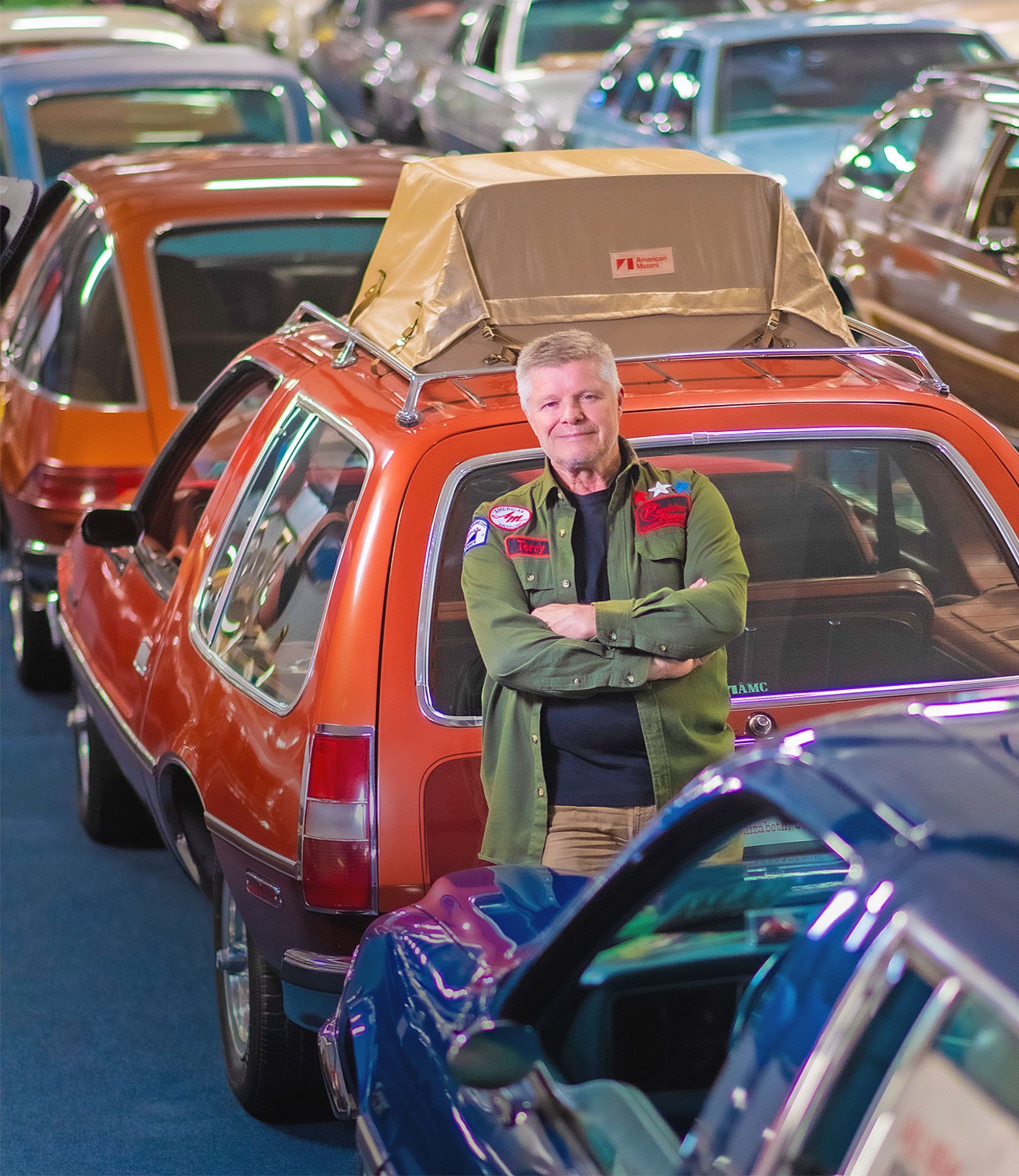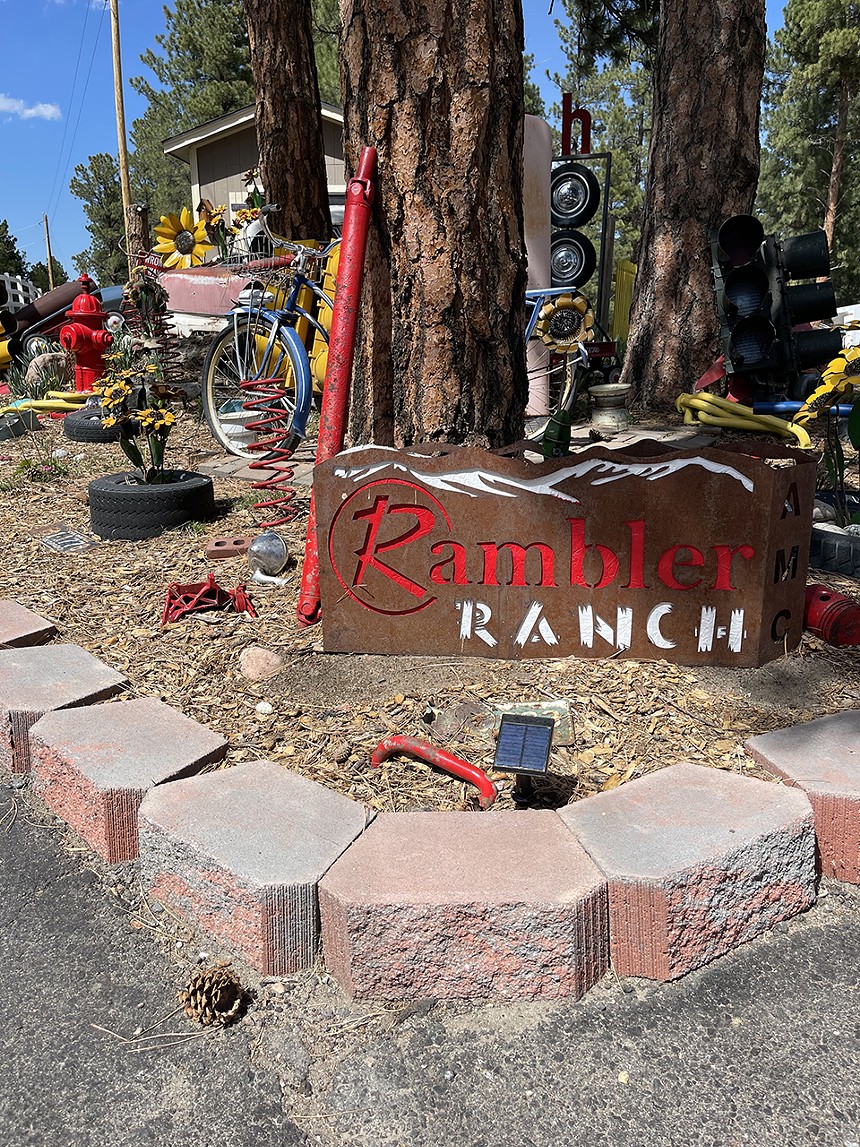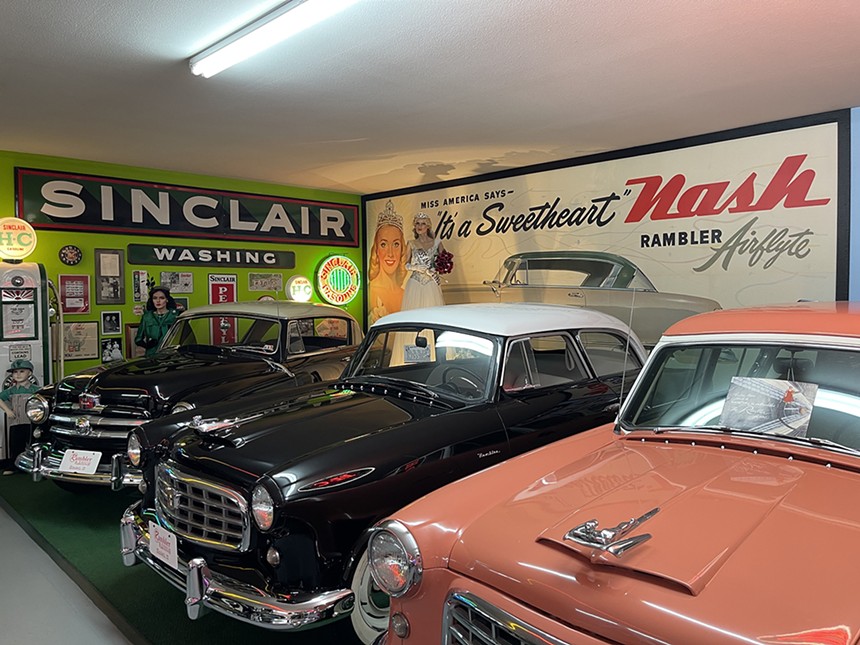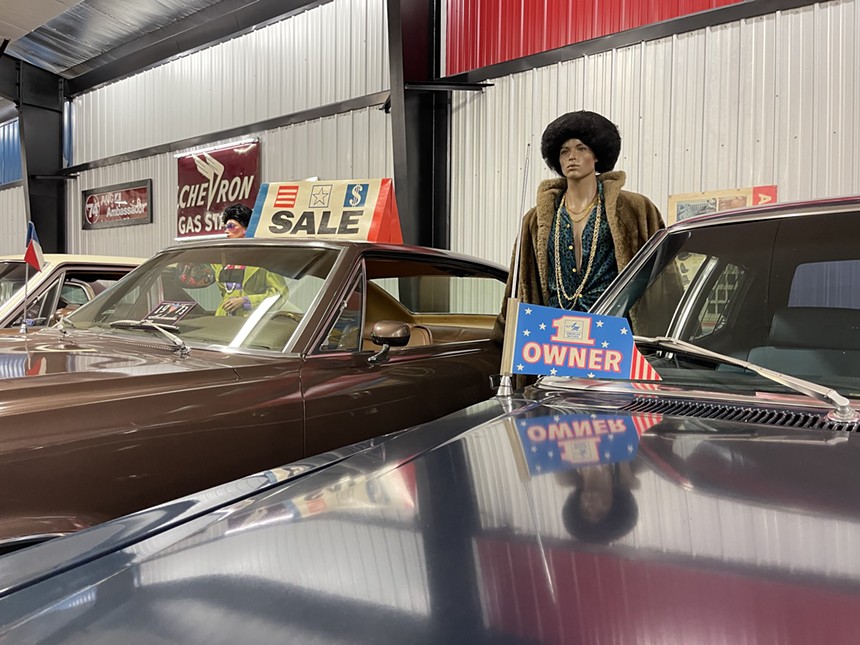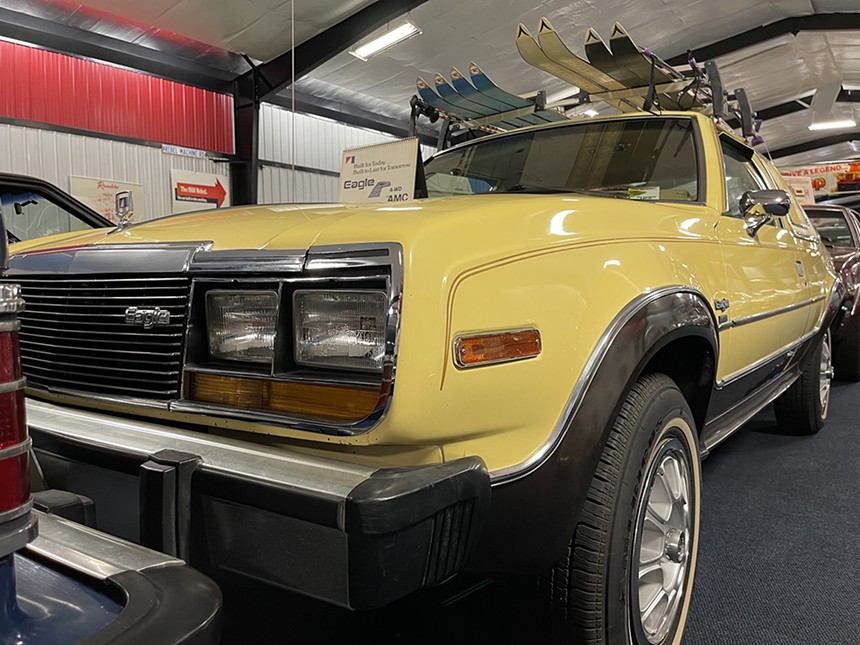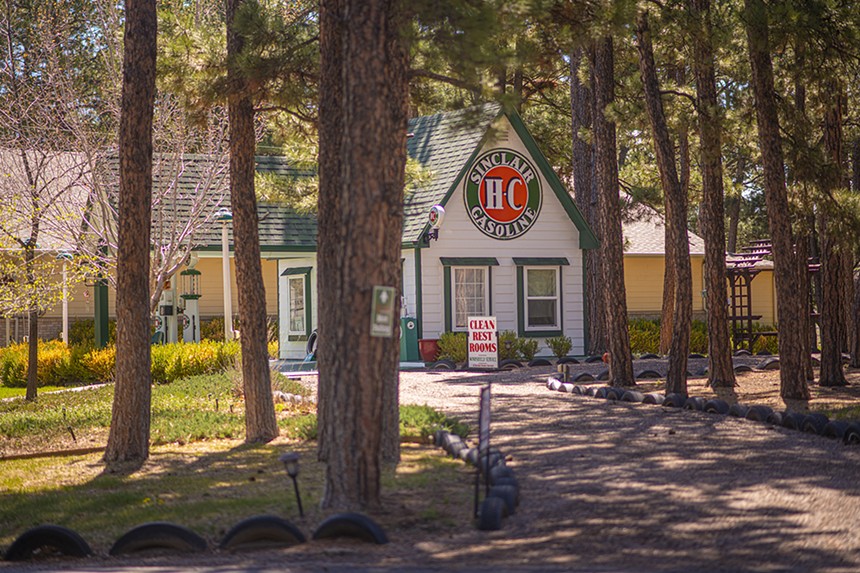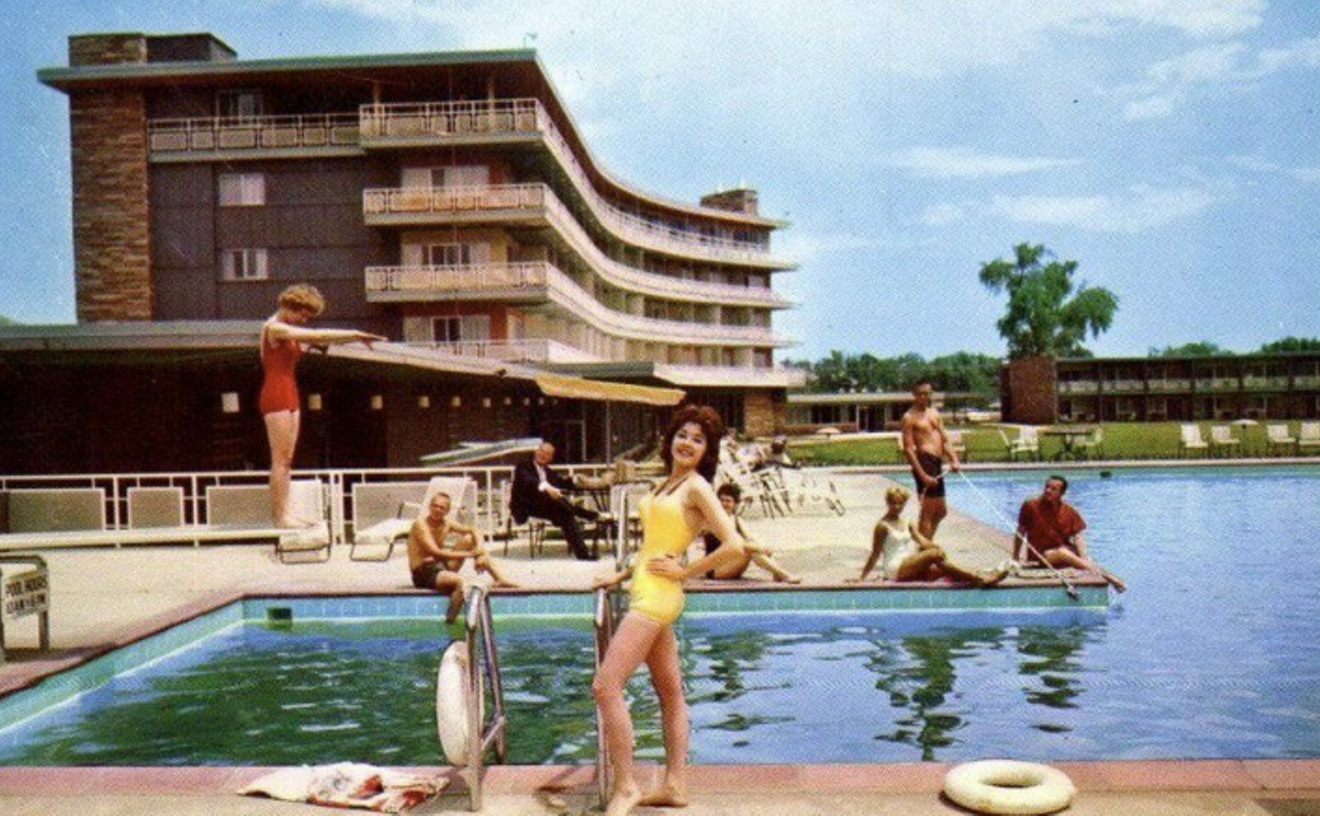Turn that query on its head, though, and you stumble onto something more compelling: Who would you be if you didn’t have to live like the rest of us working shmucks, if there were no time or distance between desire and attainment?
With any luck, you'd be like Terry Gale, the man behind the wheel of Rambler Ranch, who's as unique as several of the cars in his staggering, 600-plus vehicle collection.
As you drive through Elizabeth, past signs alternately imploring you to get tickets for the Elizabeth Stampede Rodeo and to “Keep Elizabeth Rural,” whatever that means, your car will kick up plenty of rocks clambering down two different county roads that lead to Rambler Ranch.
You’d be forgiven, almost, for expecting a big man in an even bigger hat to wave you in, Jed Clampett style. Instead you’ll find Terry Gale, a soft-spoken man of decidedly unremarkable height with placid blue eyes and a timid, boyish smile that belies his 62 years.
But you hardly have time to exchange any pleasantries before Gale kicks off the tour. The collection is why you came all this way, after all — and you have a lot of collection ahead of you. Nestled among the trees is 60,000 square feet of cars packed bumper to bumper in what is the world’s largest collection of Nash, Rambler and American Motors Corporation (AMC) cars.
If you’re a die-hard gearhead, you’ve made it to Mecca. But even if you’re the type who has a hard time differentiating between a crankshaft and a carburetor, the sheer scale of the collection will get your engine running.
“There’s something here for everybody,” Gale promises. “You don’t have to be a car person. By the time people leave here and they see the designs, the colors, the style, they see these as more of a work of art. So it’s kind of almost like going to an art museum, because they’re so unique-looking.”
That's a bit of an understatement, even when you compare Rambler Ranch to other car museums in this state. Many collections, from Kentucky’s National Corvette Museum to the Petersen Automotive Museum in Los Angeles and the Larz Anderson Auto Museum in Massachusetts, tend to truck in superlatives: They’re home to the fastest cars, the rarest cars, the most expensive cars, the most impressive cars, and so on. Gale’s collection, by contrast, celebrates the automobile’s center-stage role in the lives of America's working families, folks who likely have never been within spittin’ distance of a so-called “supercar.”
“People will come here, and they’ll tell me, ‘Oh, my grandma drove one of those, or one of those,” Gale says. “Other folks will ask me if I have a Duesenberg,” a hyper-expensive, ultra-collectible car produced in exceptionally small quantities from 1921 to 1937. He doesn’t. “Nobody’s ever told me their grandma drove a Duesenberg.”
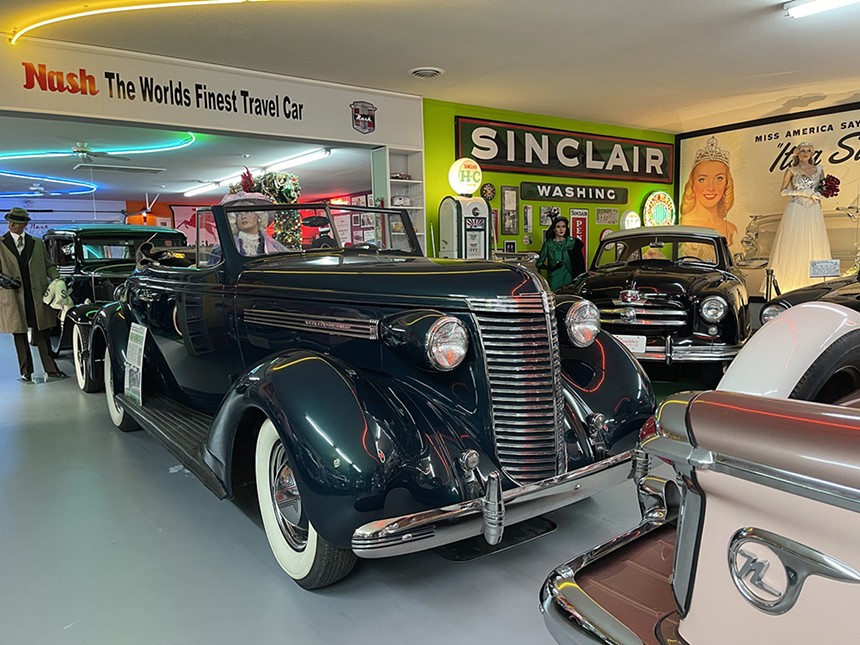
Inside Rambler Ranch's "Nash" building, with dozens of restored cars and collectibles — including the dress worn by Colleen Kay Hutchins, Miss America 1952, in advertisements for Nash Motors.
Skyler McKinley
Nash Motors was the car company founded in 1916 by former General Motors president Charles W. Nash after he bought out the Thomas B. Jeffery Company and renamed it after himself. In 1954, Nash Motors merged with the Hudson Motor Car Company to form the American Motors Corporation, the U.S. auto industry’s spunky outsider — famed for its innovative and offbeat moon shots against the “Big Three” manufacturers: General Motors, Ford and Chrysler.
Its Pacer was made famous by Wayne’s World. The Gremlin, sketched out by AMC design chief Dick Teague on an air sickness bag and promoted by the company as “America’s first subcompact car,” looked like nothing else on the road at the time — and still doesn’t, for better or for worse. The Eagle, a four-wheel-drive passenger vehicle, is now acknowledged as the first-ever “crossover” car and the forerunner to all those Subaru Outbacks and Toyota Rav4s on the road today.
And then, starting in 1970, there was AMC’s ownership of the famed Jeep brand, thought to be the golden years of the American icon. In the late ’80s, AMC designed what would become the Jeep Grand Cherokee, though perhaps it shouldn’t have: Chrysler CEO Lee Iacocca wanted the car so badly that he led a buyout of French automaker Renault’s stock in AMC, not long after its head, Georges Besse, was assassinated by French leftists. Chrysler took over the company completely in 1987, and AMC badging — and its outsider spirit — were long gone shortly thereafter.

Rambler Ranch's 18,000-square-foot "AMC" building, the largest collection of American Motors Corporation vehicles in the world.
Skyler McKinley
“A lot of people who have been through here have said, ‘Oh, we had a Rambler when I was a kid. I was so embarrassed to be seen in it.’ It was seen as a poor man’s car,” Gale recalls. “When these kids were buying their first car, they bought a Ford or Chevy, because that’s what the cool kids had.”
But unlike collectors of high-octane hypercars, Gale — an almost painfully earnest, unpretentious former handyman now worth an untold fortune — almost certainly never cared what the cool kids thought.
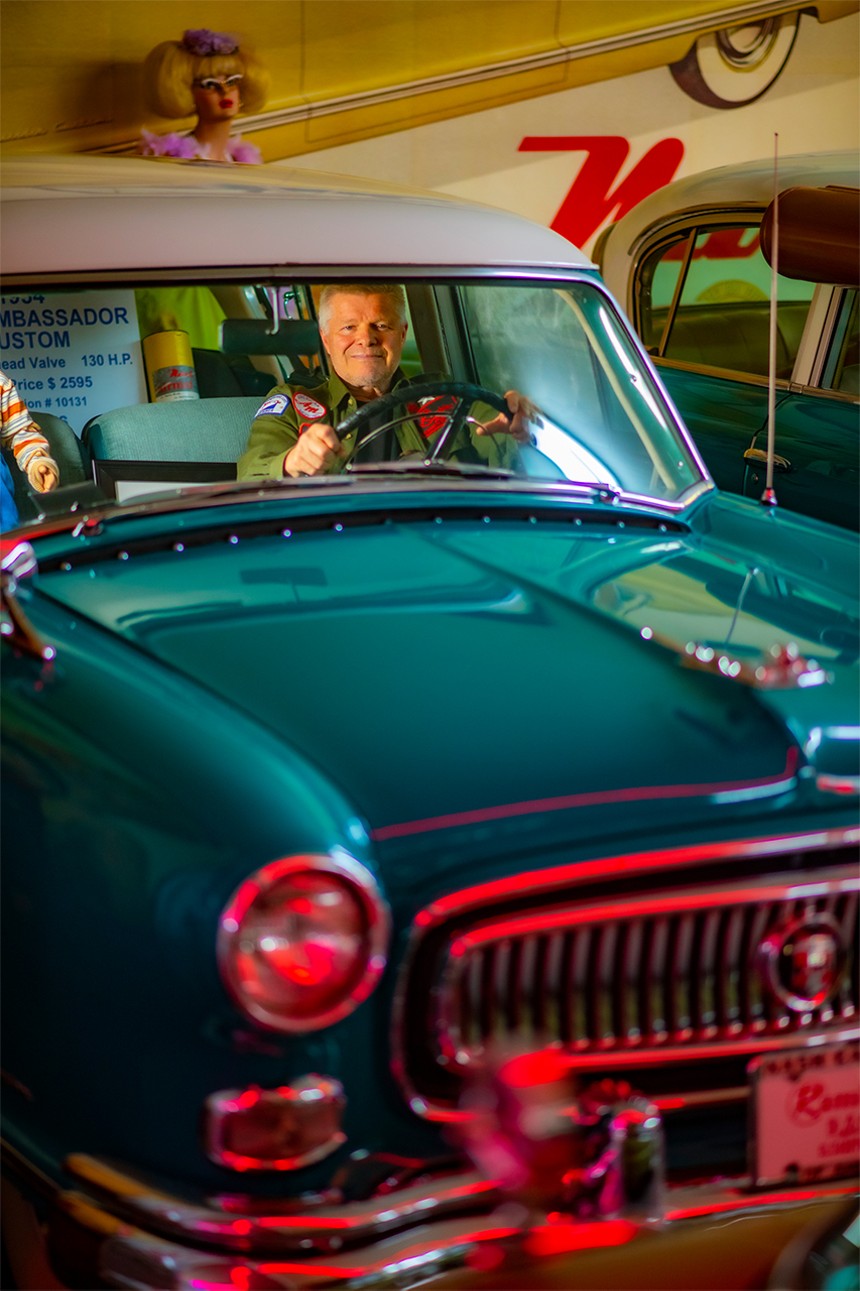
Terry Gale behind the wheel of his late father's Nash Ambassador, the first car in the collection.
Evan Semón
And as if it weren't enough to deal with a divorce, two blended families numbering nineteen kids and the literal brick-by-brick reconstruction of his whole town, Gale also held on to a secret: He was gay.
“Living in this small Mormon town, I knew I had these feelings,” he says. “I’ve always been attracted to men. And I thought, I’m the only guy in the world like this. What’s wrong with me?” He distracted himself from the gravity of these greater questions by keeping his nose to the grindstone: mowing lawns, clerking at a grocery store, flipping burgers, and even delivering ears of corn door to door. At fifteen, before he had a license, he saved up enough to buy his first car: a 1967 Ford Galaxie 500. Not long after, sick of the strife with his mother’s husband, he moved in with his dad in Grand Junction.
“I was really close with my dad,” he says. “He was always very affectionate, very, very loving. We got along great. He was very supportive of whatever I wanted to do.”
For a moment, life opened up for Gale. But then, not long after he turned sixteen and could finally take the wheel of that ’67 Galaxie, tragedy: “On March 6, 1977,” Gale recalls, eyes glistening, “my father committed suicide. I was the one who found him.”
Gale took his eyes off the road. He dropped out of high school and moved in with a nearby brother, though his relationship with his sister-in-law was fractious. That same year, he also managed to tell his mother he was gay. She “wasn’t thrilled,” he says, but she still wanted to be part of his life.
A bright spot, sure, but overall? “I was miserable,” he remembers. Fed up at eighteen, in 1979 he moved to Denver.
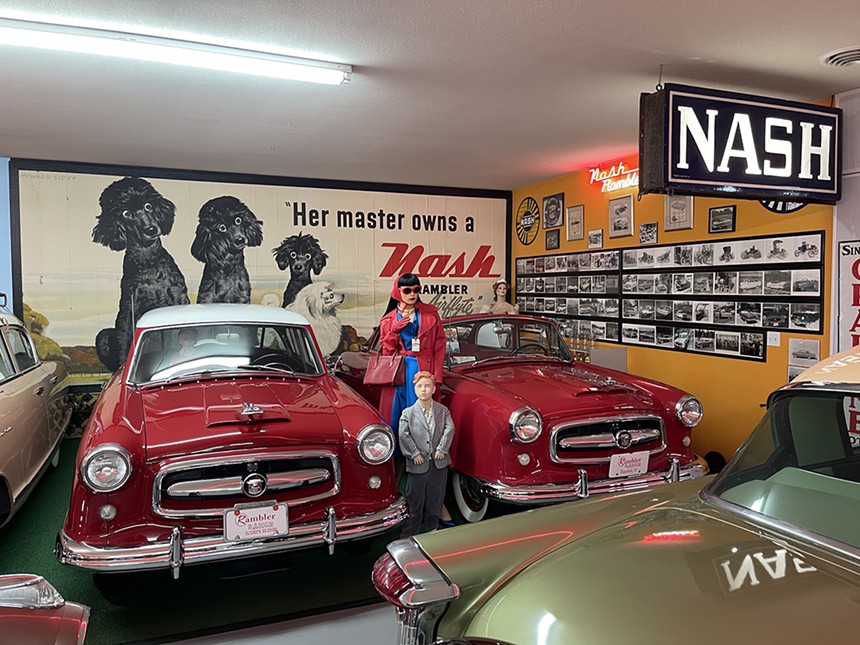
Collectibles, including original roadside billboards, line the walls of the "Nash" building.
Skyler McKinley
Around 1989, a longtime customer from the Kmart days asked Gale if he could install accessibility modifications at the home of a 27-year-old friend who'd recently suffered a stroke. That’s how Terry Gale came to meet Greg Kissinger, the reclusive heir to Denver’s Kissinger Petroleum fortune.
“Greg would peek out the door to watch me when I was working at his house, and I had no idea, because he was unable to speak,” Gale remembers. “Greg would tell people that he fell in love with me the first time he heard my voice.”
As Kissinger gradually recovered his ability to speak, the two became friends, and then a couple. “It just felt natural,” Gale remembers. At the age of 31, Gale retired from his handyman work to spend his days with Kissinger, who needed an attentive, thoughtful, loving partner as he grappled with various health challenges.
Generous to his core and with the money to make that mean something, Kissinger asked Gale what he wanted for their first anniversary. It wasn’t a tough question. In the early 1970s, Gale’s late father had spent $50 on a 1954 Nash Ambassador at the dealership where he worked. The car blew an oil pump when Gale was a kid, and it moldered on his family’s property in Grand Junction, rusting away long past Gale’s father’s suicide, Gale's coming out of the closet and moving to Denver, his meeting Greg.
Gale wanted to restore the car. A few headaches later, the Ambassador glistened better than new in Caribbean Blue...and Gale was bit by the car-buying bug. “As a kid, I always played with Hot Wheels and Matchbox and Tonka trucks. I just always loved cars,” he says. “When I got bigger, so did my toys.”
Gale’s enthusiasm found its match in Kissinger’s generosity, and the collection swelled to thirty cars — all Nash, Rambler and AMC models, because they were far more affordable than decidedly more “collectible” cars, and, Gale notes, “nobody else was collecting them.”
Fed up with Gale tinkering on his collection in tight quarters at a small storage lot in Aurora, Kissinger surprised him with a five-acre spread in Elizabeth as a Christmas gift in 1992 — and Rambler Ranch was born.
Soon after, the couple bought another 160 acres to ward off developers planning a subdivision. “More space meant more buildings and more cars,” Gale says. They moved to the property full-time in 1995 after building a 7,000-square-foot house there — complete with a private theater so that Kissinger, who was “addicted to movies but terrified of being out in public,” could indulge in peace.
From swap meets to newspaper ads to eBay auctions and beyond, Gale grew his collection. First a 7,500-square-foot building for his dad’s ’54 Ambassador and other prime Nash vehicles, followed by a 5,000-square-foot addition. Then an 18,000-square-footer dedicated to AMC’s nearly forty-year lineup and a 16,000-square-foot car barn for “Brand X” vehicles, those that weren’t necessarily produced by Nash or AMC.
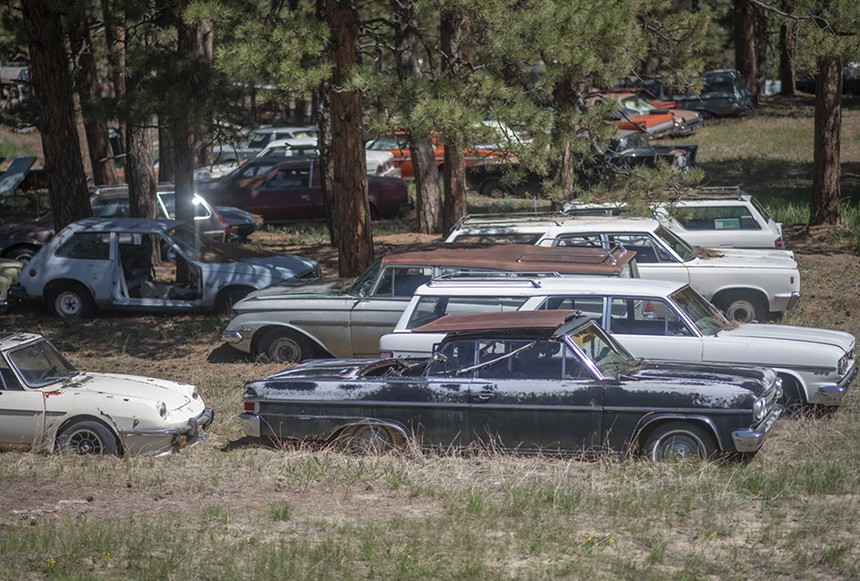
The "Boneyard" at Rambler Ranch, with hundreds of cars Terry Gales uses for parts, intends to restore, or sells or trades to other enthusiasts.
Evan Semón
You get the sense that Terry Gale is the only child of the ’60s who never suffered America’s Vietnam War hangover — or any type of hangover, for that matter. He doesn’t drink and never has.
All of these life-sized, time-capsule entries provide a pleasant detour from all of the cars — not that you need one. Around 250 automobiles are on display in the four main buildings, nestled between historic billboards, thousands of collectibles and dozens of mannequins all dressed authentically, if ostentatiously, for the periods the cars represent.
In the Nash building, bulbous, pastel, chrome-y exemplars of America’s manic post-war optimism draw you past more fins than you’d find in an aquarium — until you arrive at the decidedly boxier offerings from Nash’s early years. On the way out, you can’t help but linger by the striking 1955 Nash Ambassador Pinin Farina Speciale. Just don’t lean on it: It’s the only one of its kind.
Ramble over to the AMC building, and you’ll find a staggering number of economy cars that came to define working-class life in America, even if AMC only ever outsold any of the “Big Three” once, in 1961 — “the year I was born,” Gale says. There are rarities here, too: near-mint-condition AMC Matadors, Javelins and AMXs, and the world’s only complete collection of the themed Westerner, Briarcliff and Mariner editions of the 1967 AMC Rebel Cross Country Station Wagon, each produced in small numbers and only available in certain parts of the country.
Mostly, though, what you’ll see are the funky, family-friendly cars built for folks to afford: AMC Ambassadors, AMC Pacers, AMC Eagles and, yes, AMC Gremlins.
And in the Brand X building, currently undergoing a renovation, are all of those cars that don’t quite fit in anywhere else, even among AMC’s oddballs. CJs, YJs, Jeepster Commandos, Wagoneers and more from AMC’s seventeen-year Jeep stewardship, sure. But also the three-wheeled Reliant Robin, a BMW Isetta with its refrigerator-inspired front entry, and the “Lectric Leopard,” a 1980s Renault LeCar converted by U.S. Electricar to run on (you guessed it) electricity.
And then there are the hundreds of part cars rusting out in Gale’s “Boneyard,” including a 1958 Ambassador wagon that belonged to none other than U.S. Senator Mitt Romney’s mom, Lenore, from back when Mitt’s father, George Romney, was AMC’s CEO.
As you take this all in, you wouldn't be blamed for thinking about all the billionaires spending world-changing amounts of money to blast off into space or blast off inanities on whatever social media platform they just bought. What did this all cost, and why would Terry Gale spend it on Lenore Romney’s station wagon, of all things?
But Rambler Ranch doesn’t represent the midlife crisis of a frustrated or frustrating tech CEO. It’s instead the life’s work of an ex-Mormon high school dropout who came out of the closet not long after he discovered his father’s suicide. It’s the manifest result of thousands of hours from a workaday Kmart clerk turned handyman who fell in love with an oilman’s lonely heir. It’s the only place on the planet preserving the memory of cheap, mostly unremarkable cars that nonetheless meant so much to hundreds of thousands of working Americans over the course of seventy years.
Rambler Ranch is also the repository of reams of love letters between Terry Gale and Greg Kissinger, expressed in boxes of title paperwork. Kissinger didn’t love cars, but he loved buying them for Gale, who loved showing them off.
Starting in 1993, local car-enthusiast clubs would ask to come out to Elizabeth to picnic and see the collection. Senior groups and other clubs followed, and soon Rambler Ranch had a stream of folks making appointments to visit. These visitors allowed Kissinger to cast off some of the social anxieties that had kept him homebound since his stroke. He’d light up as he enjoyed a rare opportunity to spend time with new people, on his own terms, without fear or judgment. In that way, Gale could give Kissinger priceless gifts of his own.
The two wed at Rambler Ranch and were married, happily, until Kissinger passed away unexpectedly in 2016. His name graces a tombstone at the nearby Elizabeth Cemetery, intertwined with an identical heart intended for Terry W. Gale. “In Love 25 Years,” the stone reads, just in front of a bench for gravesite visitors — likely Gale, and perhaps only Gale. Five minutes away, a plaque on the door of the Rambler Ranch gift shop proclaims that “The Rambler Ranch is dedicated to the memory of Greg Kissinger.”
While Rambler Ranch is necessarily this couple’s story, it’s not just that. As Gale walks by car after car, he’ll rattle off specs: engine sizes and trim levels and horsepower and how hard his on-hand mechanic worked to restore these cars to this level of glory.
But Gale is just as quick to tell you that this cherry AMC came from a friendless old man living alone in Governor’s Park who called Gale after garage-parking the thing for eighteen years. They negotiated a deal, and the old-timer asked if Gale would go to dinner with him, since he never had anybody to eat with. “It meant so much to him,” he says through an ear-to-ear grin.
Then there’s the time Gale put on a fundraiser for Elizabeth’s high school marching band, raffling off a ride in either his Rolls-Royce or his Jeep Grand Wagoneer limousine, one of only sixty ever produced. As luck would have it, the winner’s dad had worked in the factory where the car was built. “When I backed into the driveway at her parents’ house, her dad came out and started to cry that we picked him up in the Jeep,” Gale remembers, still grinning.
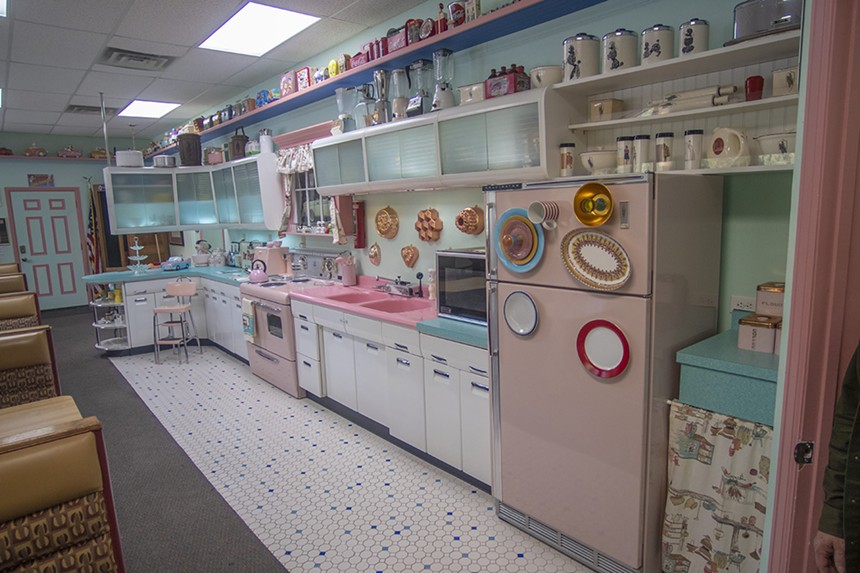
Inside the re-created '60s diner and kitchen at Rambler Ranch, which features Kelvinator appliances and collectibles given to Terry Gale from older friends over the years.
Evan Semón
The Nash building displays memorabilia promoting the music career of a “little old lady named Bessie,” who sang at the first auto shows at Denver’s Civic Center Park in an outfit called the Greenwood Revelers. She drove a 1952 Cadillac, and Gale “took care of her for ten years,” he says.
John and Eva, brother-and-sister immigrants from Yugoslavia he met while working at Kmart, never owned a car — so Gale would run errands for them, and eventually ended up looking after them for eighteen years. When they passed away, they left him their home; some of their belongings line the diner exhibit.
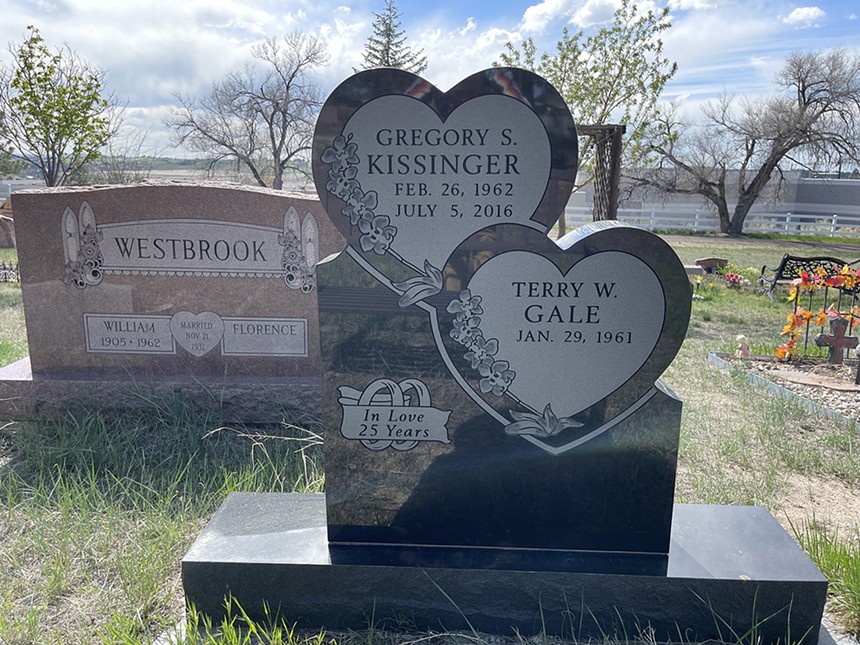
Greg Kissinger's gravesite at Elizabeth Cemetery, including a future marker for Terry Gale.
Skyler McKinley
“Cars were part of the family,” Gale says. “When I find a car in a junkyard, I just think that the day somebody bought that car, they were probably so excited. So when I get it, I’m excited, just to know that somebody loved that car, that it was special.”
Even these cars. “I just want to save something that not everyone else is saving,” Gale says. “Growing up as the underdog, I will always support the underdog. I’m very much a caregiver.”
As you hop in your own car and drive away from Rambler Ranch, you realize that only this particular underdog could have put together this particular collection — and that if it didn’t exist here, nothing remotely like it would exist anywhere.
And suddenly, instead of just wishing that you'd come into some great fortune someday, you almost wonder if you’re enough of an underdog to make it mean something if you did.
Rambler Ranch, at 36370 Forest Trail in Elizabeth, will open for its thirtieth year on May 27. Schedule a visit at ramblerranch.com or, for the first time, drop in without an appointment from 10 a.m. to 2 p.m. on Saturdays and Sundays through October 1.

